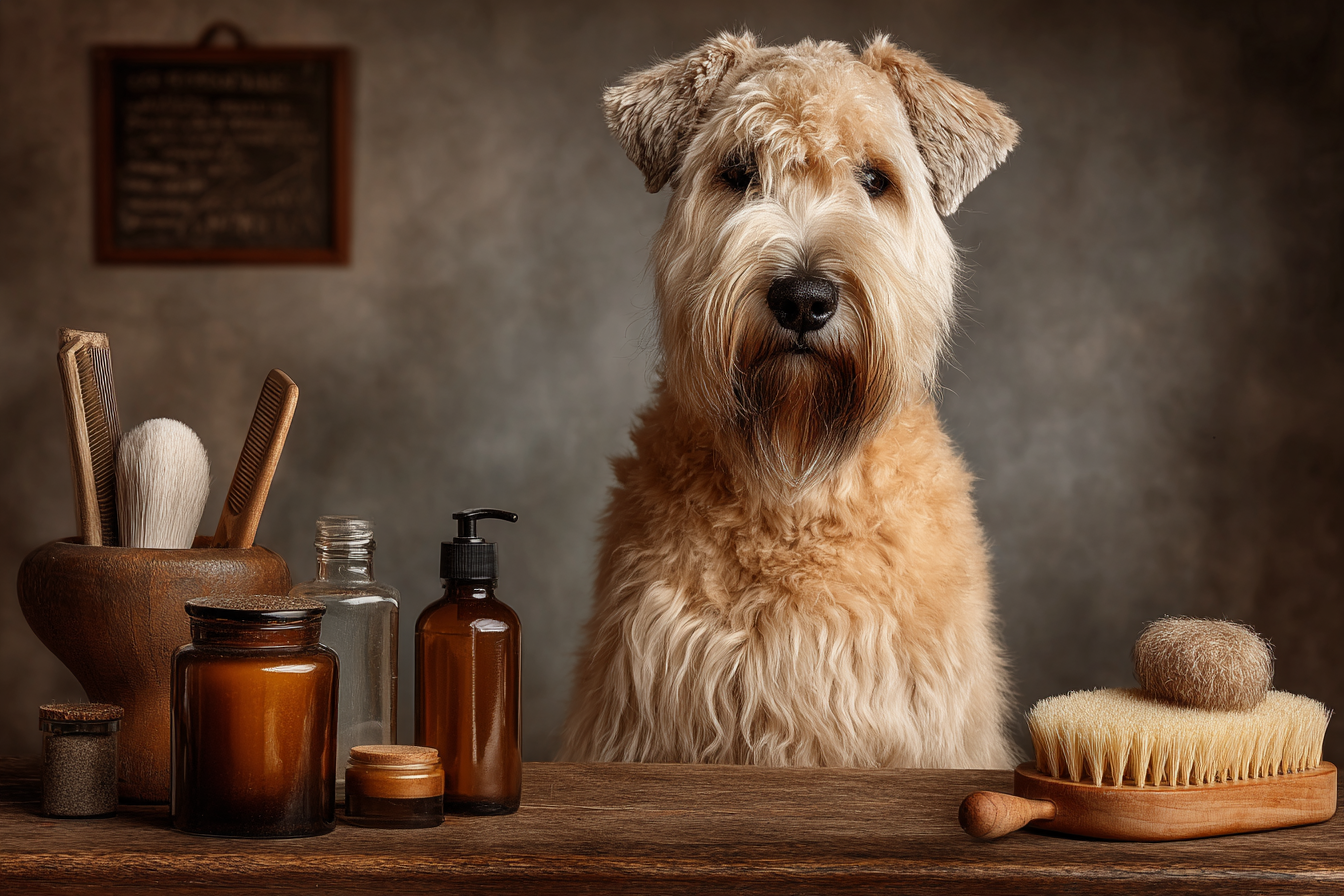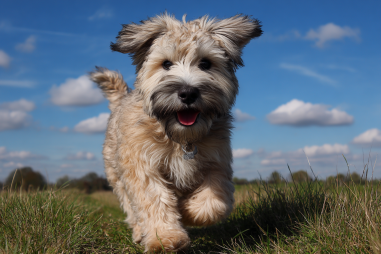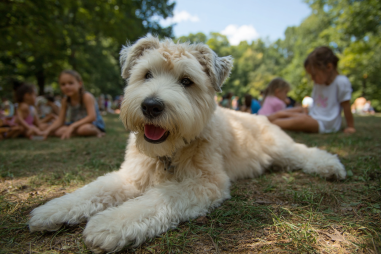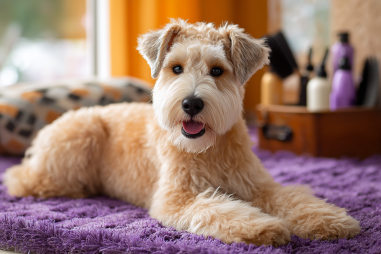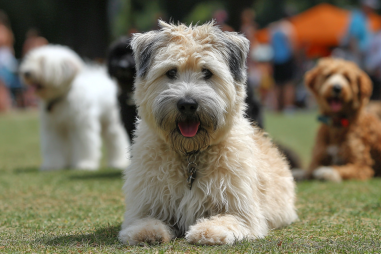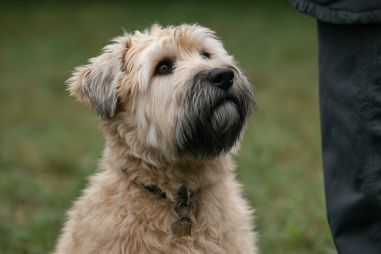The Soft Coated Wheaten Terrier is celebrated for its soft, silky fur and its relatively low shedding compared to many other breeds. However, owners should not be fooled into complacency when it comes to coat care. Despite shedding less, this breed requires consistent grooming to prevent mats and keep their luxurious coat healthy and looking beautiful. Whether you’re a new owner or someone thinking about bringing a Wheaten Terrier into your home, understanding their shedding and coat care needs is essential to maintaining your dog’s health and appearance year-round.
Shedding Characteristics
Soft Coated Wheaten Terriers are often classified as a low-shedding breed. Unlike breeds with short, dense coats that continuously shed hair throughout the year, Wheatens have a somewhat unique coat that tends to shed less hair but more slowly releases it over time. Their hair resembles human hair more than typical dog fur, which means it grows longer and falls out more gradually. This is part of the reason why their shedding is often less obvious.
However, it is important to note that “low-shedding” does not mean “no shedding.” You may still find some loose hairs around the house, or occasional strands, especially if the dog’s coat isn’t properly maintained. This minimal shedding is a boon for allergy sufferers, but only if paired with proper grooming practices to manage hair that could otherwise tangle or mat.
Seasonal Shedding Patterns
While Soft Coated Wheaten Terriers do not experience heavy shedding seasons like some breeds with thicker double coats, they can still go through mild seasonal shedding. Typically, shedding is slightly more noticeable during transitional seasons such as spring and fall. During these periods, the dog’s coat adjusts to temperature changes, causing some shedding of old or damaged hair.
Because the shedding is subtle, many owners may not even immediately notice it, but this is the perfect time to increase grooming efforts. More frequent brushing during these periods helps collect loose hair before it gets tangled or forms mats, and reduces the amount of hair shed around your home.
Daily Brushing and Maintenance
One of the most important parts of caring for a Soft Coated Wheaten Terrier is regular, ideally daily, brushing. Their silky, wavy coat is prone to tangles and mats, which can be uncomfortable or even painful if left untreated. Daily brushing aids in removing loose hair, distributes natural oils, and keeps the coat soft and shiny.
Start each grooming session with a gentle approach. Use the right tools and brush methodically to cover all areas including behind the ears, under the legs, and around the collar area where mats commonly form. A consistent brushing routine not only reduces shedding mess but also provides a chance to check for skin issues, parasites, or abnormalities that can affect the quality of the coat.
Bathing Do’s and Don’ts
Bathing is necessary to keep a Wheaten Terrier’s coat fresh and healthy but should be done wisely to avoid drying out the skin or damaging the coat’s natural texture. Here are some essential do’s and don’ts when bathing your Wheaten:
- Do: Use a high-quality, gentle dog shampoo specially formulated for sensitive or silky coats.
- Do: Rinse thoroughly to ensure no shampoo residue is left, which could cause irritation or attract dirt.
- Do: Condition the coat to help keep the hair soft and manageable.
- Don’t: Bathe too frequently—every 4 to 6 weeks or as needed is ideal to preserve the skin’s natural oils.
- Don’t: Use human shampoos, as they can disrupt your dog’s pH balance and dry out their skin.
- Don’t: Skip drying the coat properly after a bath. Use a towel and, if your dog tolerates it, a low-heat hairdryer to prevent dampness that can cause matting.
Preventing Tangles and Mats
Mats and tangles are the enemy of the Soft Coated Wheaten Terrier’s luxurious fur. These knots can trap dirt, moisture, and irritants close to the skin, leading to infections, discomfort, and even hair loss. Fortunately, timely grooming and preventive care make mats far less common.
- Brush regularly: Daily brushing reduces the chance for hair to tangle.
- Work through tangles gently: If you find small tangles, use a detangling spray and a wide-tooth comb to ease them out rather than pulling hard.
- Keep hair trimmed in problematic areas: Areas such as behind the ears, under the collar, and around the legs can be trimmed by a professional groomer to prevent the buildup of mats.
- Address mats immediately: If you encounter a stubborn mat, soak it with a detangling solution and carefully work it out instead of forcibly pulling the hair.
- Professional grooming: Schedule grooming appointments at least every 6 to 8 weeks to keep the coat in optimal condition.
Grooming Tools Suited for the Coat
Choosing the right tools is key to efficiently caring for your Wheaten Terrier’s coat. Here are some recommended grooming tools to have in your kit:
- Slicker Brush: Ideal for removing loose hair and small mats. Its fine bristles penetrate through the coat without causing damage.
- Pin Brush: Helps smooth the coat and reduces tangling once mats have been removed.
- Wide-Tooth Comb: Great for working through tangles gently, especially in delicate areas like behind the ears.
- Detangling Spray or Conditioner: Assist in managing knots during brushing sessions.
- Nail Clippers and Ear Cleaning Supplies: While not directly related to shedding, maintaining overall grooming hygiene supports coat health.
Nutrition’s Role in Coat Health
Nutrition plays a fundamental role in maintaining a soft, shiny coat and minimizing excess shedding. A balanced diet rich in essential fatty acids, vitamins, and minerals supports skin health and hair growth. Here are some nutritional tips to help keep your Wheaten’s coat in top shape:
- Omega-3 and Omega-6 fatty acids: Found in fish oils and flaxseed, these help keep skin hydrated and coat glossy.
- High-quality protein: Dogs need quality protein sources, as hair is primarily made of keratin, a protein.
- Vitamins A, E, and biotin: These contribute to cell regeneration and skin repair.
- Hydration: Plenty of fresh water daily supports overall skin and coat health.
If you’re considering supplements, consult your veterinarian first to ensure they are appropriate for your pet’s specific needs.
Keeping Your Soft Coated Wheaten Terrier Looking Its Best
Taking care of your Soft Coated Wheaten Terrier’s coat requires a combination of regular grooming, attentive care, and good nutrition. Although they are a low-shedding breed, their signature silky coat can quickly become a tangle-prone mess without consistent maintenance. By understanding their shedding habits, brushing daily, bathing thoughtfully, and using the right grooming tools, you conquer some of the breed’s biggest coat challenges. Paired with balanced nutrition and routine professional grooming, your Wheaten Terrier will not only look beautiful but feel comfortable and healthy year-round.

